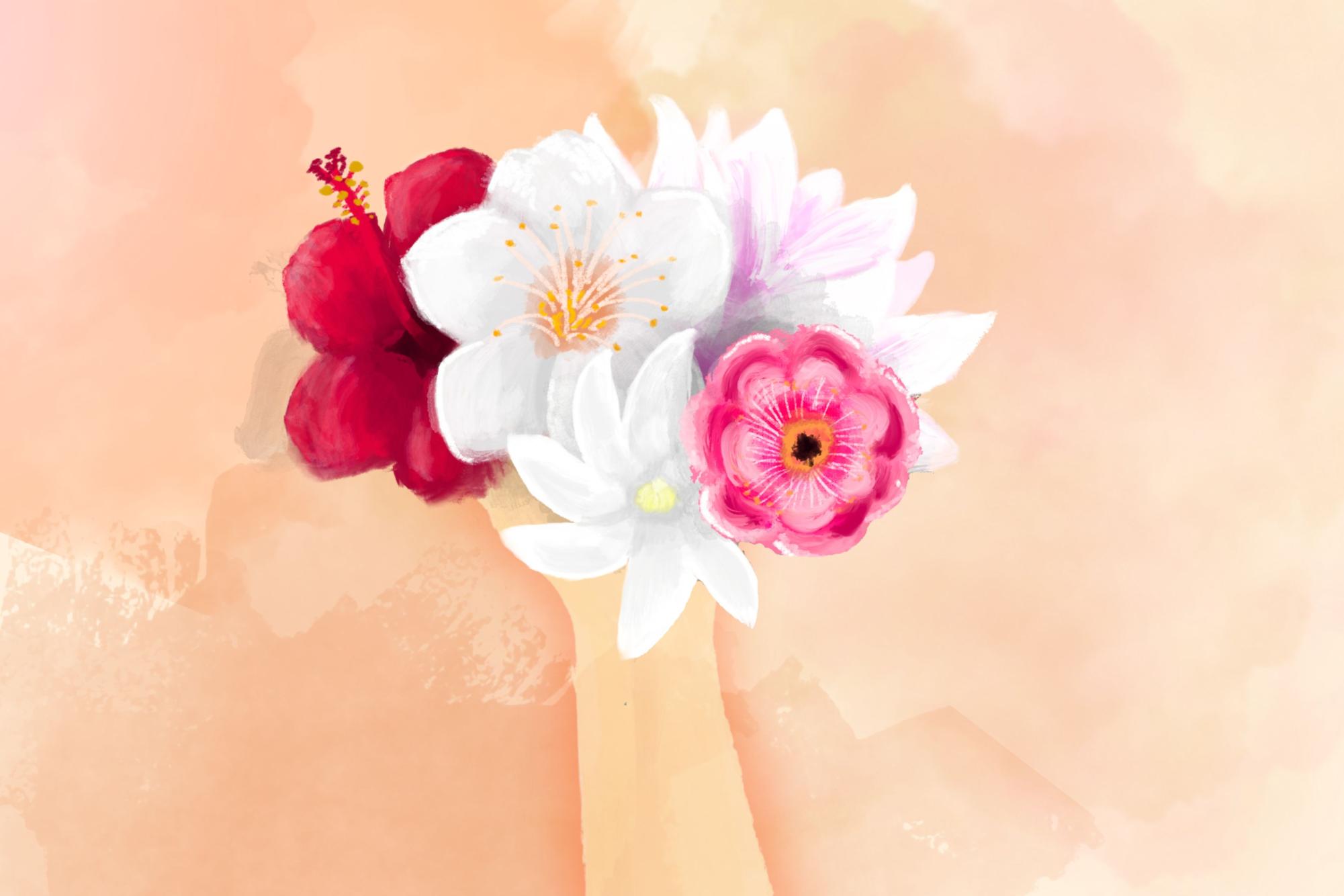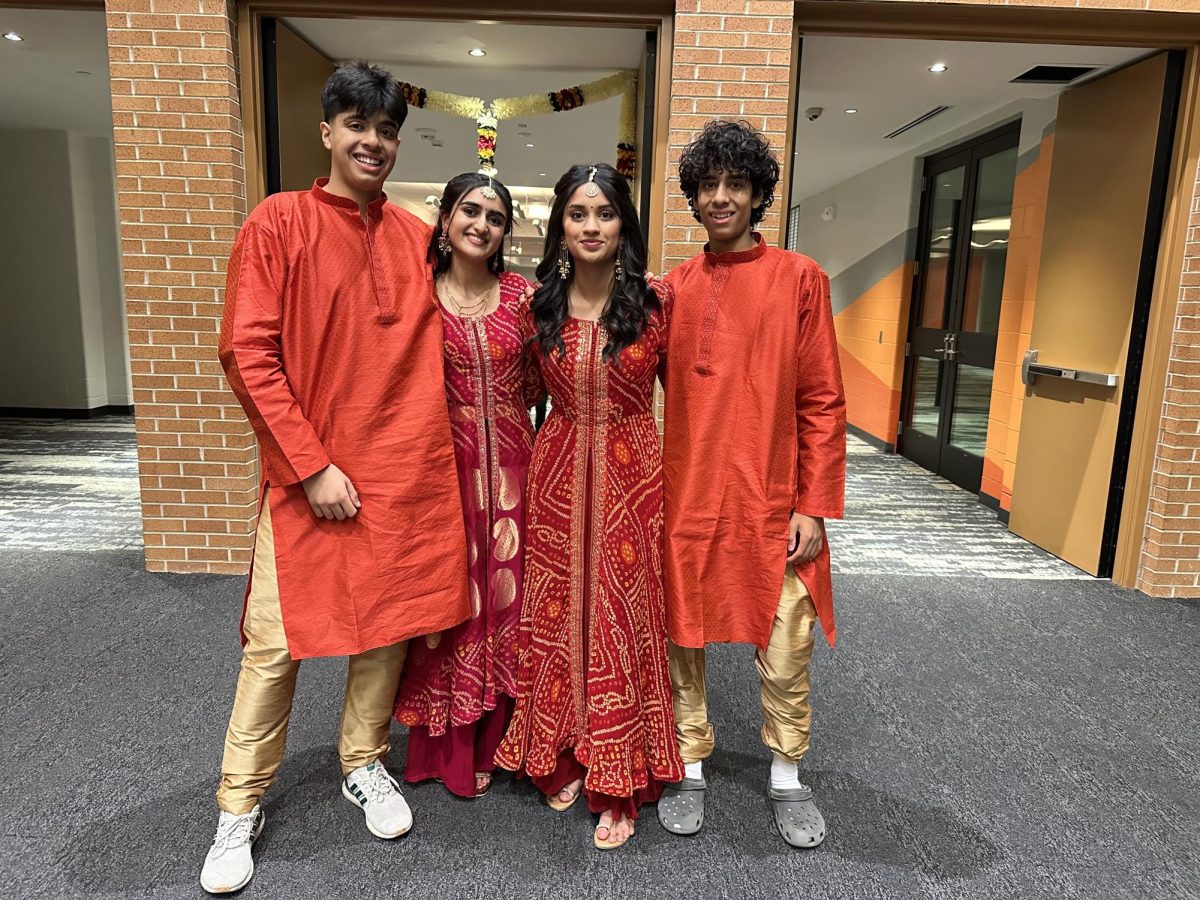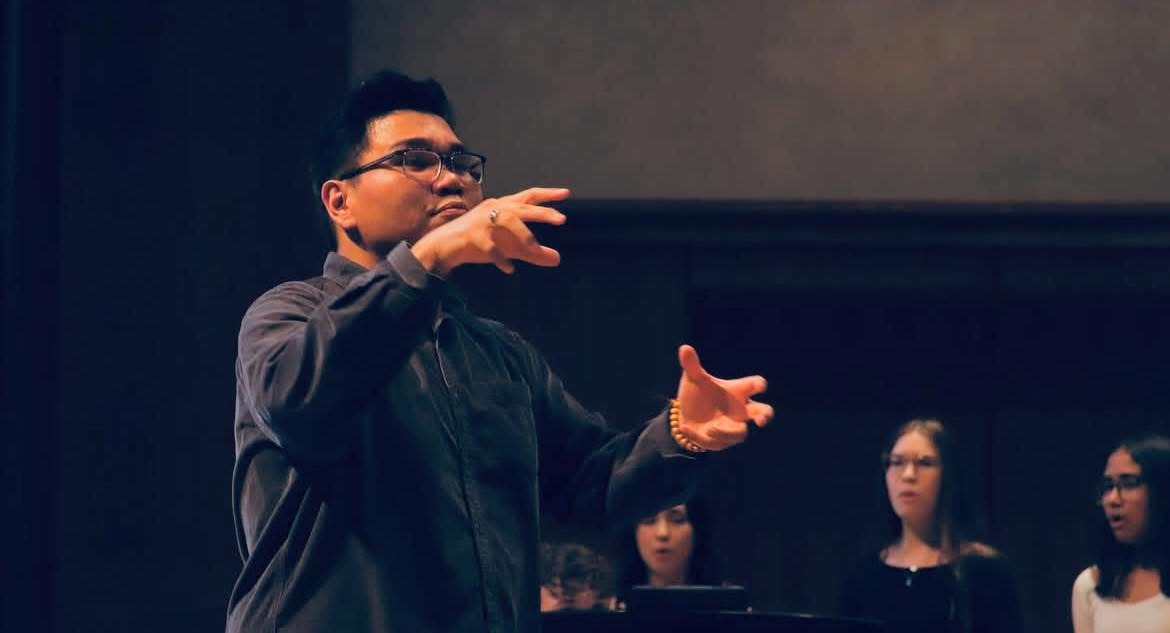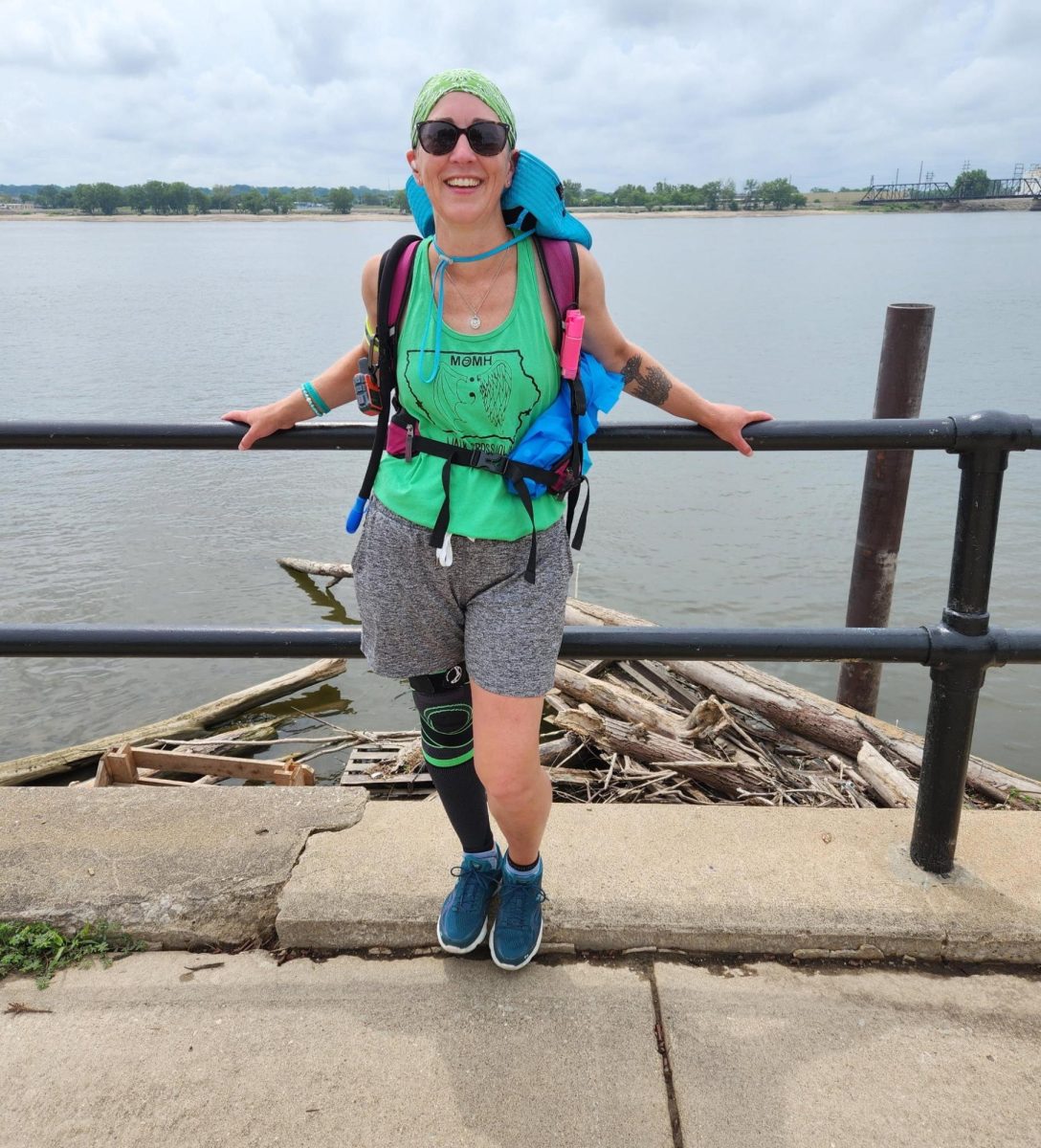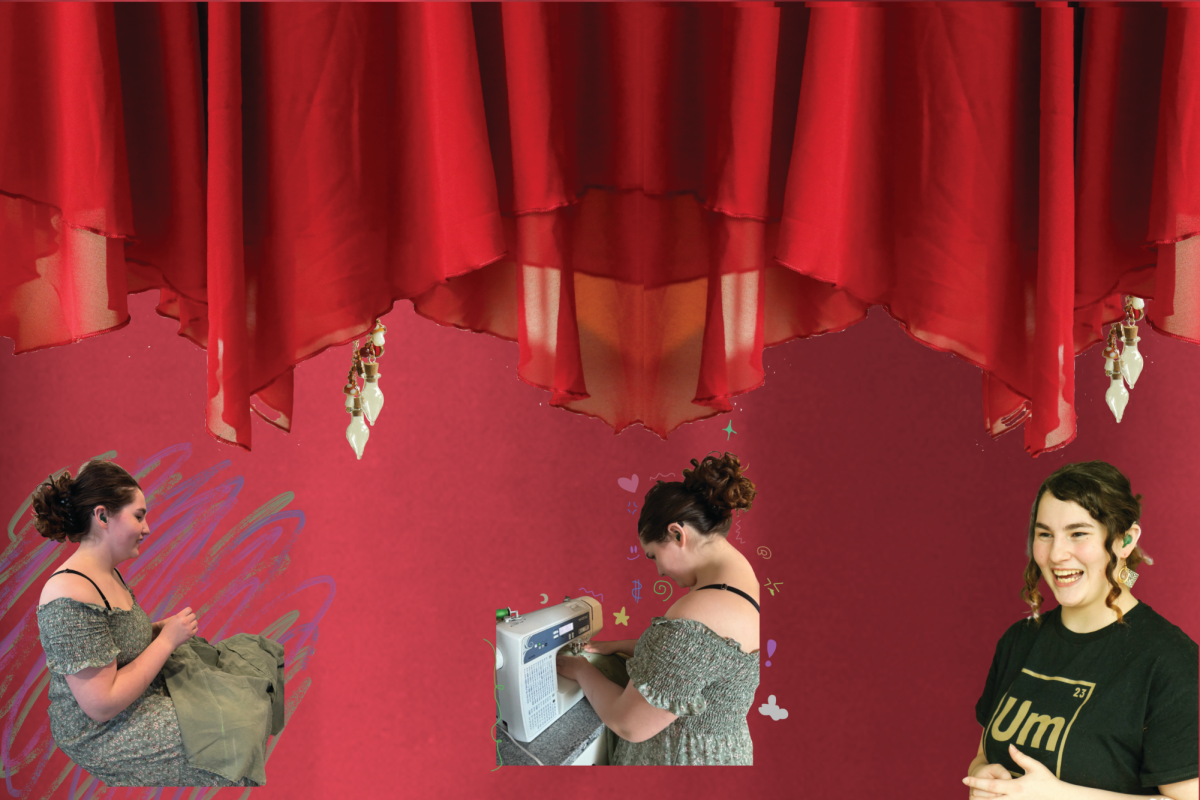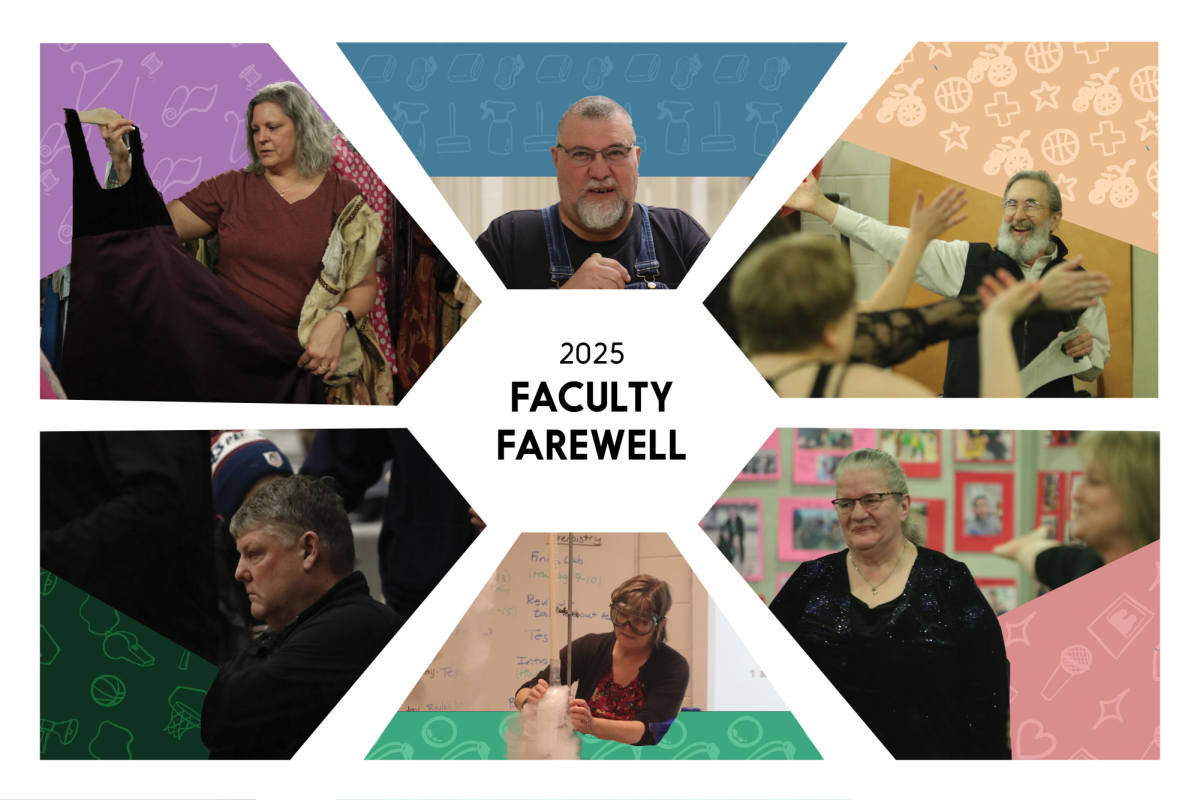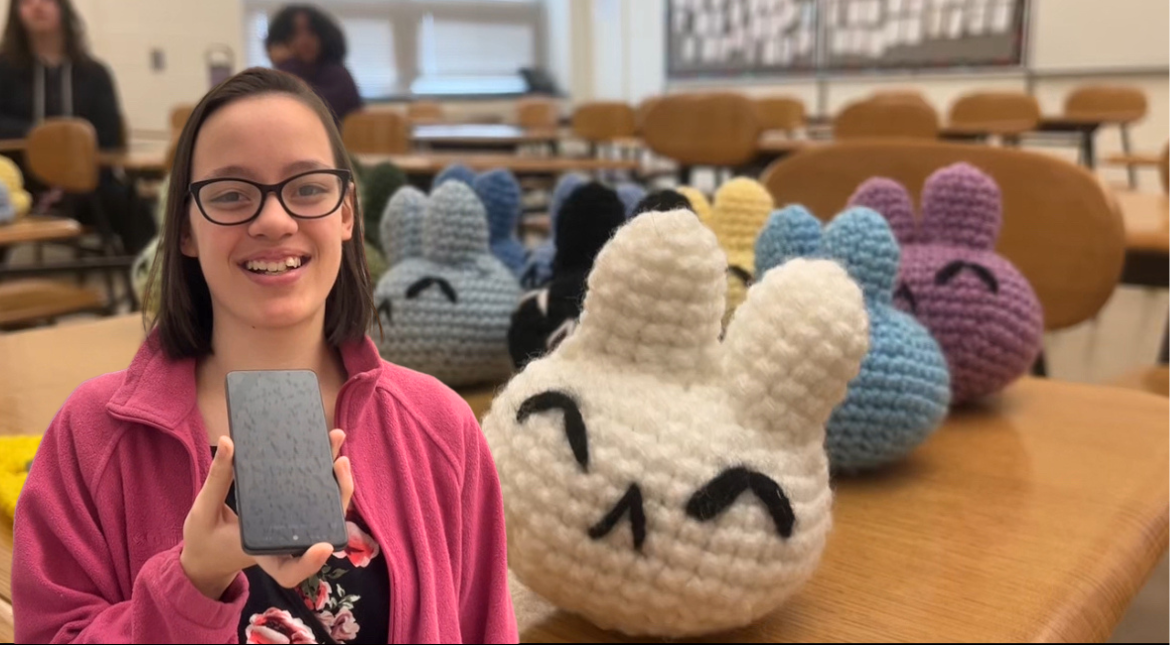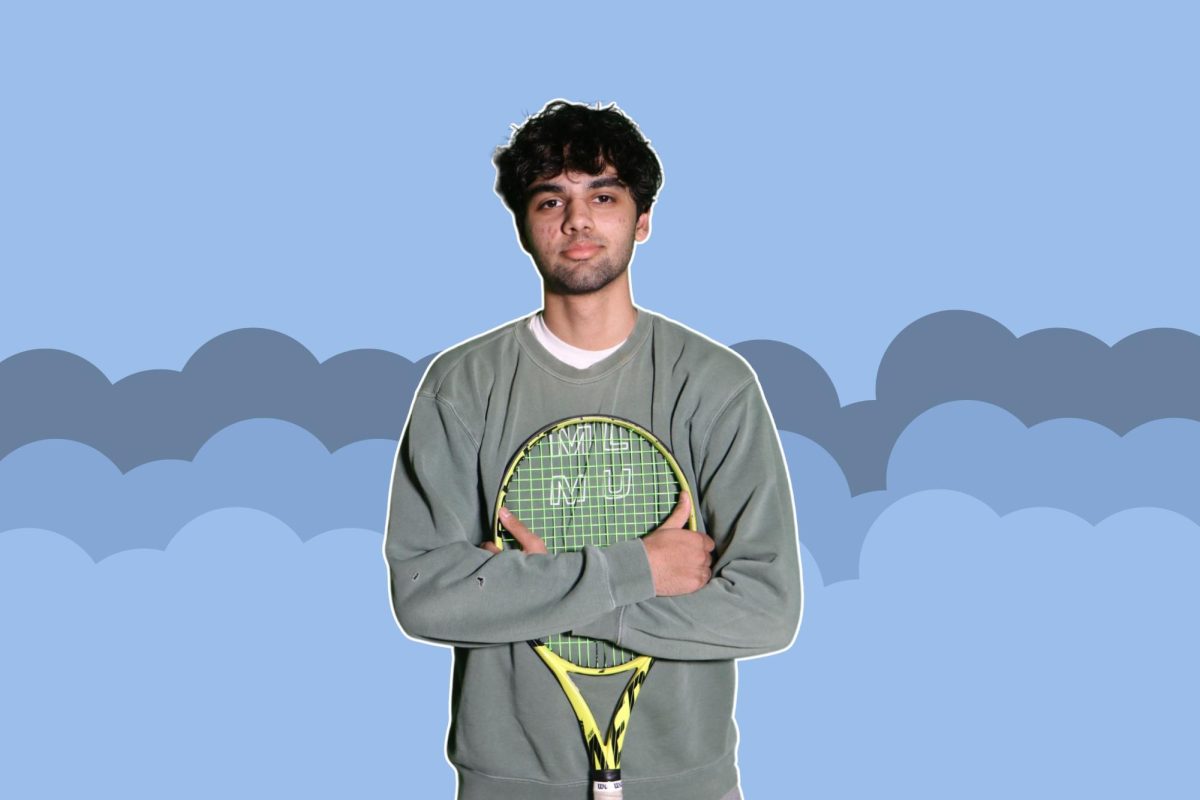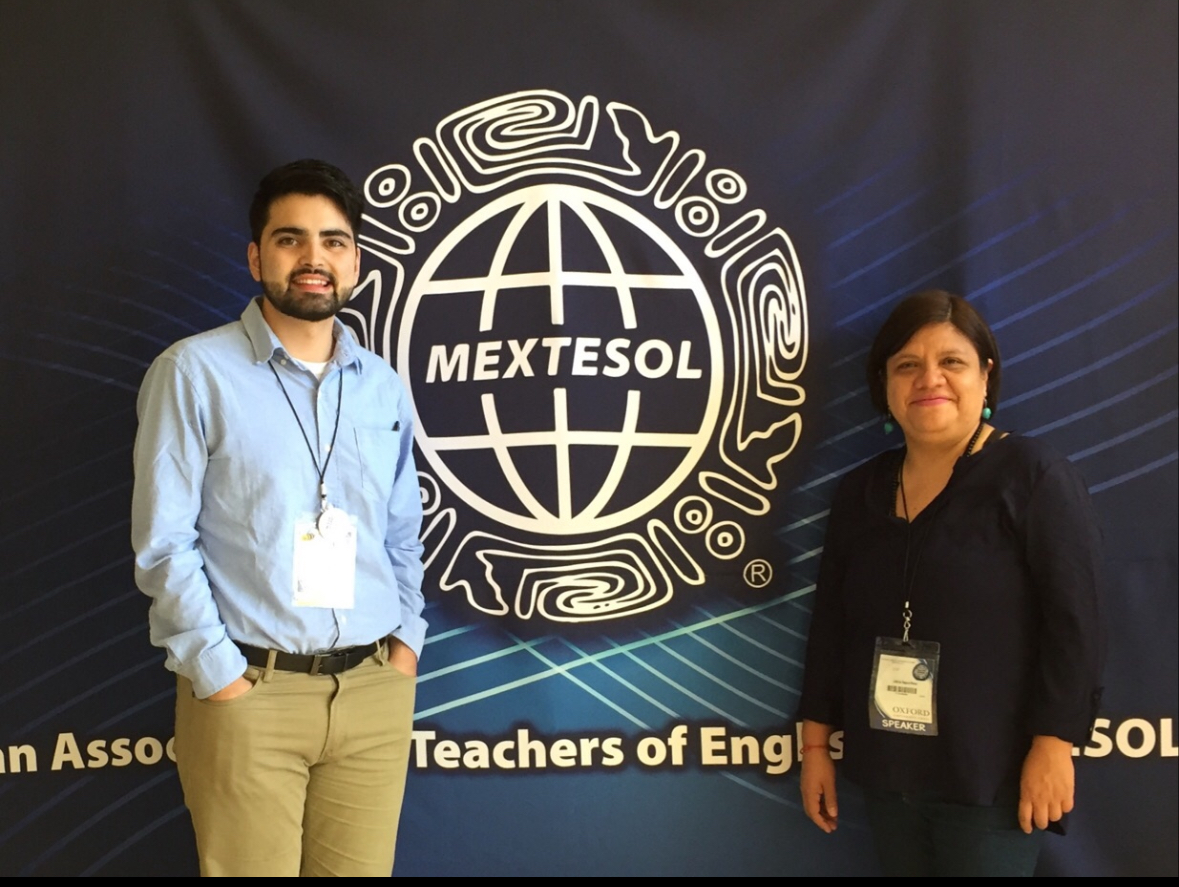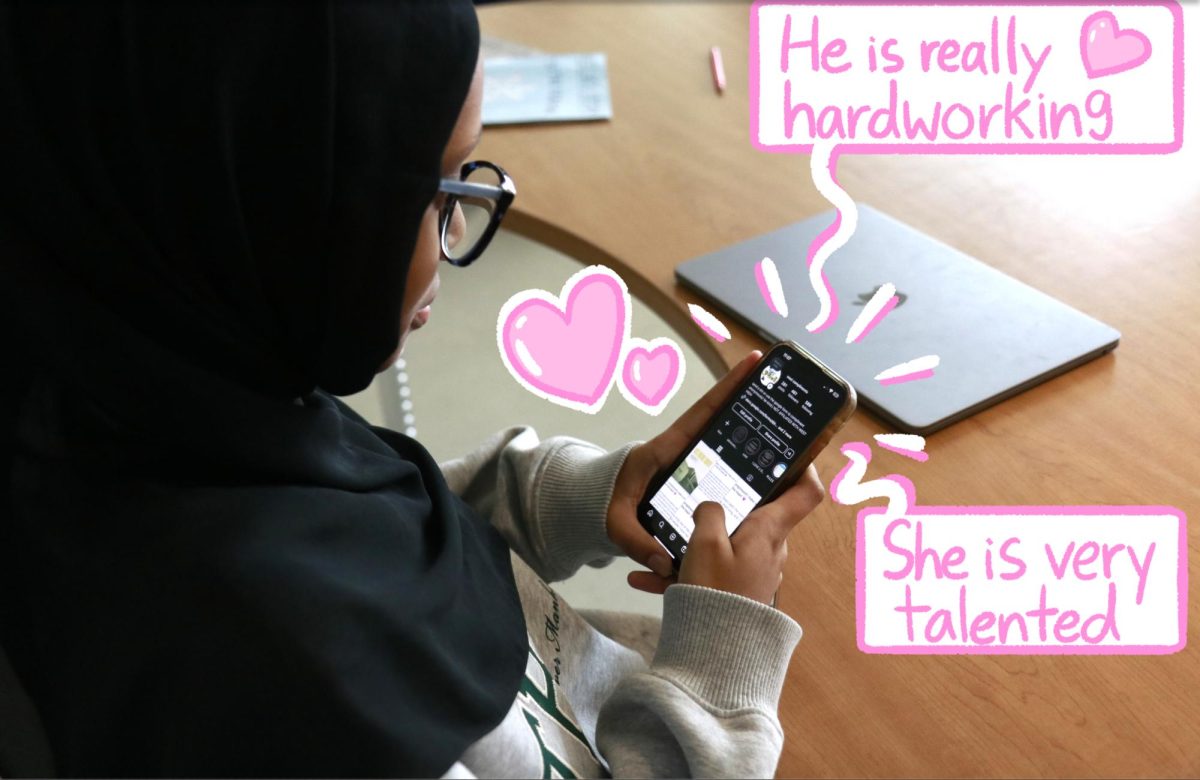Since the first Asians arrived in the United States in the 1800s and several Pacific islands were incorporated into American territory, the AAPI community has played a key role in American history. From Nobel Prize winner Steven Chu to presidential candidate Kamala Harris, the AAPI community has influenced an ever-diversifying nation.
When the California Gold Rush began in 1848, around 25,000 Chinese immigrants came to the western U.S. in search of fortune. Following the gold rush, many Chinese laborers transitioned to the railroad industry. However, Chinese immigrants faced low wages, poor working conditions and discriminatory legislation like the Chinese Exclusion Act of 1882, which suspended Chinese immigration to the U.S. until its repeal in 1943.
At the end of the 19th century, the U.S. became more involved in world affairs, securing territories in the Pacific and supporting a coup to overthrow Hawaiian Queen Lili’uokalani in 1893. Official annexation of the Hawaiian kingdom came in 1898, and Hawai’i became the 50th state in 1959. The Pacific Islands include the regions of Polynesia, Melanesia and Micronesia — countries such as Fiji, Samoa and the Marshall Islands, along with the American territories of Guam, American Samoa and the Northern Mariana Islands.
In the late 1860s, Hawai’i hosted Japanese immigrants working on sugarcane plantations. After Japan attacked Pearl Harbor in December 1941, launching American involvement in World War II, President Franklin D. Roosevelt signed Executive Order 9066 into law, which authorized the removal of all individuals deemed a threat to national security. Xenophobia towards Japanese Americans ensued, causing 122,000 to be forcibly relocated to internment camps, where they were held until the end of the war. Around 70,000 of those who were relocated were American citizens. It wasn’t until 1988 that the American government officially apologized to the incarcerated Japanese.
The COVID-19 pandemic marked escalating violence against Asian Americans due to the virus’s origin in Wuhan, China, with one-third of Asian American adults knowing someone who was targeted. This sparked the Stop Asian Hate social movement, aimed at reducing hate crimes against Asian Americans and Pacific Islanders post-pandemic.
In 1978, President Jimmy Carter established a week-long celebration of Asian Americans and Pacific Islanders, which stretched to a whole month in 1990. In 1992, Congress passed Public Law 102-450, officially designating May as AAPI Heritage Month to celebrate regions such as Southeast Asia, South Asia, East Asia, Southwest Asia and Central Asia. Throughout this month, people across the nation honor these individuals and the contributions they make to their community.
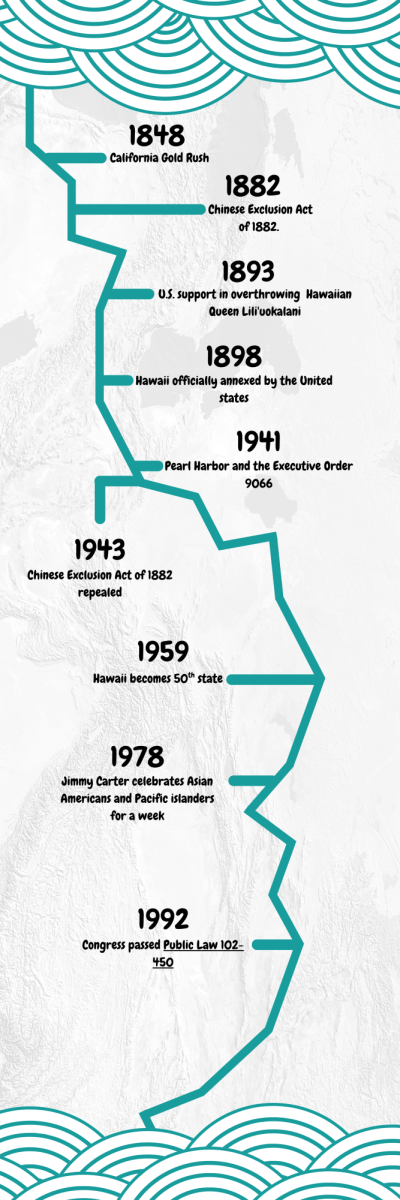
East Asia
Including countries such as Japan, China, South Korea and Taiwan, East Asia holds a rich cultural history dating back thousands of years. Several notable figures, like Fred Korematsu, a prominent activist in the fight against Japanese internment camps, have had a lasting influence on American society and politics, while holidays such as Lunar New Year are some of the most widely celebrated events in the world. The struggle many East Asians have endured has become success — the effects of these trailblazers’ legacies is seen in the Iowa City community today.
From coding in robotics to strategizing in chess, Jerry Li ’26 has made himself known for his problem-solving skills. Additionally, one of Li’s favorite activities is speech and debate, which he has been a part of since he was a freshman. Over the past three years, Li has advanced to nationals in the varsity division in events such as Lincoln-Douglas, Policy and Public Forum.
“Speech and debate have been pretty beneficial to me. It’s given me the confidence to do public speaking activities, like [emceeing] at the Lunar Gala, and to put my voice out there,” Li said.
Since 2023, Li has participated in the annual Lunar New Year Gala at the Englert Theater. From sword fights to upbeat K-pop dances, the Gala is an opportunity for community members to showcase their unique culture and learn about others. While in prior years Li performed in a dragon dance, he stepped into the role of an emcee this year.
“It’s cool to see how much representation we got and the perspectives outside of my own culture as a Chinese person,” Li said. “[The Gala has] allowed other people to get a better grasp of our culture. Mayor Bruce Teague is one of the people [who] recurrently [attends]. My interactions with him have shown me people are learning about our culture via these activities.”
The Lunar New Year Gala, hosted by the Asian Pacific Islander American Public Affairs Association, is one of many events that work to celebrate Asian communities in the area. The Eastern Iowa Chapter of the APAPA hosted a World Culture Festival in 2023 that included traditional performances, food and crafts. Due to its success, the Eastern Iowa Chapter of the APAPA has garnered proclamations from the Iowa House of Representatives.
In addition to emceeing at the Lunar New Year Gala, Li believes signing up for a Chinese class at the University of Iowa helped him get in touch with his culture.
“I signed up for a Chinese [class] at the University of Iowa that helped me get connected with key cultural figures within our community,” Li said.
According to the National Alliance on Mental Illness, AAPI youth are much more likely to experience family, academic and social stress due to the “model minority myth.” To overcome this pressure, Li prioritizes his mental health by finding time for himself and his hobbies.
“Mental health is largely disregarded within Chinese culture, so finding time for myself is a large thing,” Li said. “My experience in Iowa City has helped me [challenge] these stereotypes. Knowing there are people out there willing to lend me a voice in these celebrations of my culture [has] been monumental [in] building my confidence.”
Emily Hagiwara ’25 has been singing ever since joining choir in seventh grade. Her passion for choir prompted her to join Good Time Company, one of West High’s show choirs. She loves the supportive atmosphere that show choir has to offer and has found her voice through the experience.
“Everyone’s super nice and accepting. It feels like a strong team where we all have the same goal and passions. [There are] people I’ve been with since seventh grade choir, so I know everybody well,” Hagiwara said.
As Hagiwara has found a community in show choir, she has also bonded with fellow members of Walk it Out, West’s annual multicultural fashion show. This year, Hagiwara was a leader of the East Asian region and walked the stage wearing a traditional Japanese kimono.
“I don’t show that [side] often; it’s not like I’m wearing my cultural outfit every day. I also did the K-pop dance — it’s not aligned with my culture, but [I] like being able to represent other countries,” Hagiwara said. “Acknowledging our culture that we have in common [is something] we’re able to relate to on a different level.”
Like Li, Hagiwara is a victim of expectations imposed due to her heritage. Many AAPI youth find it difficult to connect with their cultures out of fear of being perceived as “whitewashed,” a stereotype used to describe someone who has assimilated into Western culture. Hagiwara believes no one should be forced to choose between fitting in with their culture and existing as an outsider.
“If [others] think I’m whitewashed, that’s just an idea they have in their head,” Hagiwara said. “I don’t think people should have to navigate between being ‘whitewashed’ and aligning with [their] culture. Culture is still [a] part of you no matter how you dress, act or the friends you have.”
In the fall, Hagiwara will attend Macalester College to major in biology on a pre-dental or pre-medical track. She will continue to celebrate her culture by attending family gatherings and going on yearly trips to Japan.
“It’s a very typical Asian American experience to grow up ashamed of your culture and not want to embrace that part of yourself,” Hagiwara said. “Coming to a place where you feel proud to embrace it is what I’ve grown to enjoy.”
Southwest Asia & Central Asia
Southwest Asia — also referred to as the Middle East — features countries such as Yemen and Iran, while Central Asia includes countries like Uzbekistan and Kazakhstan. Southwest Asia presents key figures and locations central to Abrahamic religions such as Islam, Judaism and Christianity. Central Asia — although geographically diverse — features various secular and religious holidays, ranging from Kazakhstan’s Unity Day to Uzbekistan’s Nauryz. As the percentage of migrants from these regions continues to climb, they take their cultural influence with them, where it can be seen in communities across the country.
While Ibrahim Abudagga ’27 is a part of Mock Trial and on the JV tennis team, one of his favorite extracurriculars is participating in speech and debate. Abudagga joined the debate team two years ago and has found that despite the welcoming environment, it can feel inhumane to debate over sensitive topics.
“My favorite part of debate is the community. I love going to tournaments with friends, practicing together, team-building events and team dinners,” Abudagga said. “[Debating] about conflicts in general gives me mixed feelings because on one hand, you learn about tragedies going on around the world, but also debaters see death counts and other impacts of the tragedies as just numbers to win rounds and not people. For example, if your impact is 100 deaths, it is considered low, but that is 100 people with families and dreams and not just a number.”
With roots in Palestine, Abudagga has connected with his culture by speaking Arabic at home and displaying his culture at school. Since his freshman year, Abudagga has performed in Walk It Out, this year showcasing a Palestinian Gombaz.
“Walk it Out is a great way to display your culture and [have] fun. You get to talk to people from different backgrounds, see their culture and enjoy it,” Abudagga said. “I met a lot of different people from the Middle East that I didn’t know [were] even from [there] for the first time.”
Recently, the events in Palestine have motivated Abudagga’s family to further support the civilians back home by creating HOPE, a nonprofit organization dedicated to providing for the Palestinians in the Gaza Strip and the West Bank. HOPE is currently rebuilding destroyed houses in the Gaza Strip and ensuring that everyone there has access to education. HOPE also hosts events selling Palestinian goods and uses the money to send supplies to Gaza.
“We have a stand [at] the flea market and host different events at churches and mosques,” Abudagga said. “After [people] donate, [we distribute] pots of food. There’s also this health point where people can go and get medicine funded by HOPE. There [are] orphans that we sponsor; since they need someone to provide for them, we find someone that will help them and buy them food.”
Through HOPE, Abudagga has been able to stay connected to his roots while supporting a community in need. Abudagga believes continuing to celebrate his heritage is key to ensuring it gets passed down through the generations.
“Remember where you come from, remember your culture, and make sure it doesn’t get forgotten,” Abudagga said.
South Asia
South Asia encompasses a vast, geographically diverse region with notable figures such as the former U.S. Vice President Kamala Harris, independence seeker Mahatma Gandhi and educational activist Malala Yousafzai. From 1858 to 1947, India was under British colonial rule until it regained its independence — splitting the country into India and Pakistan to create lands for their major religious groups to inhabit. Although South Asia has divided into various political partitions, the region remains saturated with unique terrain, rich culture and diverse ethnic groups.
From being a two-time team state champion in BPA to a math and science tutor, Ishan Harwani ’25 loves to get involved in a plethora of extracurriculars. Harwani has been a member of West’s varsity tennis team since his freshman year and is now the co-captain. Harwani volunteers as a tennis instructor at the University of Iowa and participates in club tennis. He looks up to his former club tennis coach, Iowa graduate Oliver Okonkwo, with whom he bonded outside of athletics.
“I remember we would have study sessions together because I felt like he was more than a coach to me. We bonded on another level,” Harwani said. “We would [practice] together, then we would start studying together. That motivated me to work hard.”
Whether a coach or another student, Harwani loves connecting with the people around him. The desire to meet new people and help others motivated him to join Best of West, a group of student tutors at West High. Harwani finds that he feels most proud when his mentees notice improved performance.
“I was helping one of the students [who was] trying to pass their Geometry test,” Harwani said. “The next day, they told me that they did good on the test, and that made me happy.”
Aside from helping others, Harwani is interested in exploring new environments — specifically, Phoenix, Arizona, where he plans to study mechanical engineering at Arizona State University. Harwani’s passion in the field stemmed from joining a robotics club in third grade, where he was able to build beginner-level machines.
“We would use parts to create Battle Bots, put them in a ring and have them fight each other. It was a little bit of strategy and a little bit of how you built your robot to make yourself win,” Harwani said. “In sixth grade, I got a humanoid [robot], which I enjoyed building throughout COVID, and I think it has impacted my career.”
Along with his interest in engineering, Harwani also participated in Walk it Out and the Harvest Festival run by the Indian Association of the Iowa City Area. He’s enjoyed connecting with other South Asian students through dances and performances. One of Harwani’s favorite ways to celebrate his culture is gathering with family and friends, especially during holidays such as Holi and Ganesh Chaturthi.
“During the holidays, there’s a community aspect. We all get together in one home, even if we’re cramming people in. We’re always down to help each other,” Harwani said.
While Indian Americans account for 21% of the Asian population in the U.S., they are not the only South Asian community to make waves on a local and national level. According to The Pew Research Center, around 198,000 Nepalese Americans were living in the U.S. in 2019, with 554,000 Pakistanis and 208,000 Bangladeshis also making up large percentages of the population. University of Iowa senior Apeksha Adhikari has long sought a connection to a Nepalese community, which motivated her to join her university’s Nepalese Student Association as an executive board member.
“In the Des Moines metro [area], it was hard to make friends with [Nepalis] my age. So I thought, why not start connecting with people here?” Adhikari said. “As I gained connections, I realized, ‘This is a cool organization that I can be a part of.’ I liked the idea of doing events that we did in Nepal, so that people can learn about our culture. It’s cool when non-Nepali people get immersed in [my] culture so they understand my experiences.”
Although there have been efforts to gain more representation in the South Asian community, social setbacks have impacted their representation in politics, medicine and art, therefore limiting people’s perceptions of them.
“A lot of South Asians [are] Indian, and they don’t try to prioritize the surrounding South Asian community like Bangladeshis, Sri Lankans and Maldivians. To increase our representation, we have tried our best to be as involved with other South Asian organizations,” Adhikari said. “For a lot of Nepalis who feel like [our] community may not be for them, we’re trying to increase our presence so they become more comfortable [joining] our organization. They just want to fit in, and when they try to fit in, they want to be ‘more Indian’ or ‘more Brown.’”
This phenomenon motivated Adhikari and the NSA to further publicize their organization and its efforts to increase South Asian recognition.
“Way more non-Nepali people are aware of our organization and involved [than] in previous years. Honestly, people will care if you make yourself visible and known,” Adhikari said. “Even though we’re NSA, come see our events and support us! We are Asian too, and it’s important that you also know about our culture just as much as you know Vietnamese culture or Chinese culture.”
Adhikari believes it all comes down to people’s willingness to learn without biases, and although South Asians are a collective identity, it doesn’t rob them of their individuality.
“Inform [people] about the geography [and] inform them about our basic facts,” Adhikari said. “It’s fine to reeducate them and also make sure that they know that we’re different than other South Asians — we have our own identity that makes us unique, and that’s what’s important to share.”
Southeast Asia
Southeast Asia features a culturally diverse region with a vast range of countries such as Cambodia, Indonesia, Myanmar and Vietnam. Several key cultural figures, including Sri Mulyani, an Indonesian economist, have spurred significant changes within their respective countries and around the world. Locally, community members with ties to Southeast Asia have also inspired change in their community.
Hải Huỳnh, the Associate Director of the Coralville Community Food Pantry and a five-year City Council member, is one of the founding members of the Coralville Asian Festival, which held its third annual festival May 17. As Huỳnh’s children grew up, she wanted them to experience the unique traditions within Asian culture and showcase them to others. To bring the community together, Huỳnh and her friends Omega Dancel, Jennifer Nguyen and Ming Lodh funded the Coralville Asian Festival with the support of local businesses.
“I’ve always wanted to find [a] community that looked like me. I was able to find [it], but not where I live,” Huỳnh said. “As my children grew up, I wanted to have a community locally, not only for my children to experience Asian culture but also to create a space where we can educate other folks about Asian cultural heritage and contributions. Three years ago, I was able to throw the idea out to some of my friends who are also Asian American, and they all said yes.”
Huỳnh and the festival’s goal is to showcase different traditional foods, dances and performances to the broader community. This year, several performances included a dragon dance, a selection of songs from a local choir and a fiery dance performance by West’s K-pop club.
“[The Asian Fest is] not only a community space, but it’s also a safe and welcoming space where you can see yourself. For folks who do not identify as Asian American, they can learn about our culture through food, performances, [and] art and crafts,” Huỳnh said. “Coralville is one of the most diverse communities in Iowa, so we have to celebrate that diversity. Diversity is a great thing, regardless of folks who claim that it is not. It’s a beautiful thing when we all look different than each other. We all come from different cultures, and we should be able to be proud of it and honor it, and share it in a way that we can.”
Outside of the Coralville Asian Festival, Huỳnh is an active member of the community, including her role as a Coralville City Council member. Huỳnh became the first Vietnamese-American to hold political office in Iowa when she won a special election in 2020 after another member resigned. She won reelection in 2022 and is preparing for another election this November.
“When it came time to elect someone to represent the people, I was pretty nervous, because as an immigrant, woman of color, I never thought that was my place. I think, for folks in the community of color, that is their thinking, because of the oppression that we face, the way that we were brought up [and] the way that we [are] always [viewed] as a minority in our community,” Huỳnh said. “I never thought that I would be the true representation of my community, but people kept asking, ‘Don’t you think that it’s time for Coralville to have representation on the council that looks like its community?’ Our community is so diverse, yet look at our representatives — they don’t look anything like us at all. So now is the time.”
Huỳnh’s goals as a city council member include increasing equability for minorities to ensure everyone has access to amenities offered by the city, such as quality infrastructure and housing.
“Inclusivity will always be in the work. That’s just the nature of human beings. I think, talking specifically about the Asian community, we are here, but we are not visible. Sometimes it’s [a] religious celebration that we don’t identify with, or certain cultural norms, [things that are] very different from what we grew up [with] and what we know,” Huỳnh said. “I can only speak for myself as a Vietnamese American, but from my observation, having lived in the community for as long as I have, I can see that there are efforts all over trying to create more inclusive spaces for people who seek those things. We have Korean churches, the Japanese center and a Chinese Association. There is a space where certain communities come together and [can] be themselves.”
Huỳnh believes that having more culturally sensitive events, such as international festivals, can help people recognize the diversity within a community and increase the acceptance of everyone regardless of nationality or identity. She notes that hostility towards minorities could significantly decline with an enhanced understanding and knowledge of cultural identity.
“I am an immigrant, a minority and a woman, and [with] all those things together, I have [faced] backlash. Sometimes I’m being used as a token to be able to check off the box and say, ‘Oh, we cover all diversity, [we are] inclusive and [we have a] balance between male and female.’ I am invited to the table, really not to do the work, just to be a trophy,” Huỳnh said. “Sometimes people say, ‘You don’t understand this culture. How can you represent us? You are not from here.’ I built my life here. My kids go to school here. I’m invested here in the community, yet I am still not part of the community. I’m constantly being seen as somebody who doesn’t have the investment in a community to be at [the] table.”
Despite any judgement, Huỳnh has proven to be not only a vital member of the city council, but also a dedicated community leader. Outside of her work, Huỳnh is a naturally curious person who enjoys a good adventure — she’s taken to hiking, foraging, gardening and reading. Huỳnh adores cooking, along with volunteering at different organizations to make the city a stronger place. Additionally, she has a passion for dance stemming from her family’s business in Vietnam.
“My parents loved to dance, and when we lived in Vietnam, we were quite poor, and the work that my parents did was not enough to provide for the family. They constantly tried to find a way to add to our income, so they opened a dance class in our tiny home, and people came and took lessons. As the oldest, I got roped in to help, so my parents would teach me the basics so that I [could] teach alongside them. [When] we immigrated here, my parents did the same thing,” Huỳnh said. “It’s not so much [about] the lesson, but it’s also community, because a lot of people just wanted a place where they belong. When they came to my parents’ class, they felt [like they] belonged.”
While Huỳnh is a role model for many, she instead chooses to focus on bettering the community one small step at a time.
“I never set out to be a model or empower anyone,” Huỳnh said. “We wake up and go about our day with the hope that we are making positive changes that affect the community, that we live [positively] and be a good citizen.”
Pacific Islands
The Pacific Islands are a group of islands subdivided into three regions: Micronesia, Melanesia and Polynesia. From the Philippines to Tuvalu, there are thousands of islands that hold long histories of seafaring. Today, Pacific Islanders have moved across the world, including to the U.S., where over one million immigrants are descended from the region.
Filipino-American Omega Dancel, West paraeducator and co-founder of the Coralville Asian Festival, was motivated to create the festival with her friends to increase recognition of Asian culture.
“[The festival] helps preserve the heritage and culture of the Asian communities. It helps keep the tradition alive, and it’s a way that individuals can pass down our heritage for future generations. Our festival helped build community and bring people together because it creates a sense of belongingness and shared identity,” Dancel said. “It’s an opportunity for people to learn about the diversity of Asian culture, and also it’s a way to bring entertainment and positivity in the community, because we have a lot of music and dance performances in the festival. It creates a fun atmosphere where people can gather and experience the community.”
Dancel’s passion for creating community influenced her decision to become a paraeducator. During her years of high school at West, Dancel volunteered as a peer helper in the special education department. For ten years, she continued her love for teaching by becoming a preschool teacher, then transitioned into working as a biological science teacher before returning to her former high school. It is her eleventh year as a paraeducator at West.
“I used to volunteer as a peer helper in our room for kids with special needs, and I thought, ‘This is a great way to give back.’ They’re just amazing kids,” Dancel said. “I’ve always loved being with students and teaching in general. I find [my students] very inspiring, and I enjoy working with them.”
Along with her roles as a para and founder of the festival, Dancel is also a Coralville Ambassador, a volunteer who connects and represents diverse community members. In her efforts as an ambassador, Dancel volunteers at a tri-monthly potluck for the community hosted at the Coralville Recreation Center or the Coralville Public Library.
“We try to welcome everybody. We have international food, so people can showcase their favorite meal. I made Filipino food — chicken adobo, a staple comfort food. Those are the ways that we try to get people in the community to be more aware of the different cultures and traditions that we have, and what better way than to serve them food?” Dancel said.
The Coralville Ambassadors is a volunteer organization dedicated to helping immigrants connect with valuable resources. Dancel has been a committed member of the group since 2022. Dancel is also an active youth leader at her church. “I’m a youth leader, [so] I travel with our youth group to the South. We help build houses for victims of the flood, and we help make ramps for people who are disabled or help them with yard work,” Dancel said. “I love giving back to the community, because I’m an immigrant, so I was grateful that I was able to get help. I’m not rich by any means, but now I feel like it’s time to give back, so that’s what I’m doing.”
Luigi Enriquez, a choir director at West High, was born in the Philippines and moved to the U.S. when he was nine years old. Growing up, Enriquez cooked Filipino food such as fried eggplant, adobo, shrimp, boiled eggs and lumpia. To this day, he continues to enjoy cooking traditional food for holidays and family gatherings such as Easter, Christmas and Filipino Independence Day. Additionally, eating different fruits like mangoes and bananas reminds him of his time living in the Philippines.
“Mangoes are a strong export of the Philippines. I grew up on the farm, and we had mango trees in our yard, so I remember going there on the weekends with my grandpa and [picking] mangoes off the tree. Same thing with bananas; [those are] two fruits that come to mind when I think of things that were essential to me when I was growing up,” Enriquez said.
Food, along with religious celebrations and a strong connection to the community, are very important aspects of Filipino culture. Enriquez believes that the welcoming environment Filipino people create has shaped who he is as a person.
“The Filipino people are very warm in terms of how we interact with strangers, or how we interact with our families. A few terms come to mind, like ‘kapwa,’ which is like ‘brotherhood,’” Enriquez said. “When you come over to someone’s house, there’s always tea, drinks or snacks that you can share. It’s a very open and welcoming culture, which I feel like I have taken on as a person. When I relate to my students or when I talk to my colleagues, I want to try to be a very open, easy-going person.”
Enriquez notes how there are many similarities between Filipino and American culture. In a region with a diverse population welcoming people from a plethora of backgrounds, Enriquez describes how it is important to hold onto cultural traditions, beliefs and customs.
“Filipino culture is very Americanized in many senses; I think there is a general peace within how American culture sees Filipino culture. I don’t see any animosity towards Filipino culture from the American perspective, but sometimes, I don’t think of culture because I’m surrounded by so many other cultures,” Enriquez said. “There was one time [when] I was at a national convention for choir directors in Kansas City, and there was a professional choir there from the Philippines. I didn’t know how much I needed to see that representation at the highest level of choral music-making.”
Whether he’s performing at local events or instructing a choir classroom, Enriquez spends most of his time singing. Accompanied by a few other Filipino musicians in the area, Enriquez sang a mix of traditional Filipino songs and modern pop hits during last year’s Asian Fest. Ever since he learned the instrumental basics in the Philippines, music has been an integral part of his life.
“My grandmother taught me to play piano, so when I moved here, it was natural to take more piano lessons,” Enriquez said. “[However,] I wasn’t planning to go to [college] here. I was going to go home and study medicine. When I graduated my senior year, I had not applied to any colleges, so I applied to Luther, and I got accepted. Some people have a Genesis story of, ‘I sang in high school choir and I fell in love with the music.’ [At Luther,] I fell into the teaching route, and I fell in love with being able to teach students how to make music. [It] was endearing and empowering as a young person to find out what I want to do in the future.”




